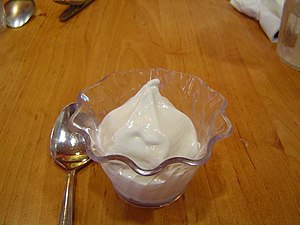
 I will put the article here in its entirety, so I don't add or subtract from it.
Read on...
-----
I will put the article here in its entirety, so I don't add or subtract from it.
Read on...
-----
Written by
L. B. Whyde
April 23, 2011
NEWARK -- Imagine seeing a car barreling across three lanes of traffic, coming right at you and then crashing into your car.
The whole left side of your body is broken; bones from your eye socket to ankle shattered.
You survive not only that crash, but 20 ensuing surgeries. Eight times, doctors tell you that you probably will not make it.
How can anyone survive such trauma? Becky Fannin has, and she gives all the credit to
God.
Fannin, 56, was the administrator at Christian Fellowship Community School in 2003 when she survived a head-on collision.
In addition to the bones that were broken, her lower left arm was degloved, meaning the skin and muscles were torn away, leaving the bone exposed.


Her hip was in the middle of her body afterward, her left kneecap was shattered, and the nerves in her legs were damaged.
It took seven months in a nursing home for her to relearn how to walk and another month at Dodd Hall at
Ohio State University Medical Center.
During that time in Flint Ridge Nursing and Rehabilitation Center, Fannin was able to room with her mother, which was exactly what she needed at the time, she said. Her mother died in 2009.
"Every time I moaned, she would push her button to get help for me," Fannin said. "I told her sometimes I just had to moan and groan."
'Such love'
During this time she had no income, but she never lacked for money. She said one time in church that God told her to donate her last $20. She did, and by the time she left that day, she had $120 in her purse. There were two benefit dinners. She never lacked for visits from family and friends.
"Never had I experienced such love," Fannin said.
She chose not to file a lawsuit against the other driver, who died in the crash.
With only the minimum coverage to work from, all of her bills were paid with enough left over so she could buy a car and a
double-wide trailer. Her new home already had a wheelchair ramp, and it was decorated in her favorite colors.
"God truly took a 'little' and multiplied it to cover a lot," Fannin said.
'Power of God'


About a year after the crash, Fannin started to drive and once again was involved in another head-on crash, but was not hurt.
Since 2003, she has been in and out of the hospital 30 times for a variety of problems, including uterine cancer, a blood infection, a bowel blockage,
kidney dialysis and many other ailments.
During one 10-day stay in the intensive care unit at Ohio State University Medical Center, Fannin begged the nurse and God to let her die. The hymns she remembered from her youth helped her through those times, she said.
"Never underestimate the power of their words," Fannin said. "Music is a mighty tool that God can use to bring comfort and assurance to his children."
After an ileostomy -- a bowel diversion surgery -- she called hospice, talked to each member of her family, finalized legal papers and even arranged her funeral.
But she agreed to one more surgery. It was found that she was full of infections that were stopping her from healing and causing severe pain.
After four months in the hospital, she had to learn to walk all over again.
"I am a spirit-filled Christian with a personal relationship with
Jesus Christ," Fannin said. "I know and have experienced the power of God working in my life. God has spoken life into my body several times when the doctors were preparing my family for death."
'
Be still and know'
Through all of what has happened to her, Fannin continues to be cheerful and content.
"A couple of days after the accident, I was talking to God about my life and where it was going," Fannin said. "He spoke very clearly to me these words, 'Be still and know that I am God!' From that moment to this very day, I have not questioned God about why this happened to me. It settled my heart. God had everything under control, and he would take care of me."


Fannin, known to many as Aunt Becky, has returned to teaching at Christian Fellowship Community School. She wears a bracelet that is inscribed with a verse from
1 Corinthians 13:4 -- "Love is patient, love is kind."
Fannin currently spends four days a week connected to a dialysis machine.
"I do not yet see the complete manifestation of my healing, but I want you to know I am not discouraged or disheartened," she said. "My prayer has been that I would walk through this time with grace and victory. Daily, I choose grace over discouragement. I choose victory over defeat."
Born in Mansfield, Fannin moved to Newark when she was 11. She graduated from
OSU with a degree in education. She taught in southern
Ohio for three years before moving back to
Licking County and working in retail for five years while co-leading a youth ministry and coffee house ministry at her local church.
She started teaching again at Christian Fellowship Community School in 1984. Three years later, she became the administrator for 17 years.
As for the future, Fannin is planning on no more surgeries. She will continue to teach until God shows her something different.


"Through it all, He has bolstered my faith," Fannin added. "He kept me leaning on him and happy. I wouldn't have gotten through this time without him. It's all God. I don't want to take any glory from him."
L.B. Whyde can be reached at (740) 328-8513 or lwhyde@newarkadvocate.com.
-----
Taken from newarkadvocate.com; source article is below:
Local woman credits God for surviving critical health issues





















